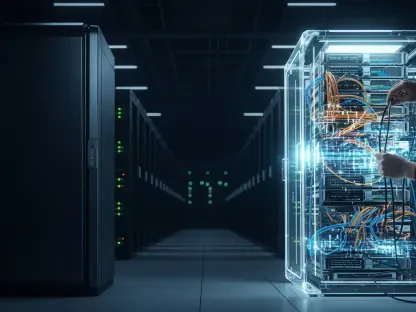I’m thrilled to sit down with Laurent Giraid, a renowned technologist whose expertise in artificial intelligence has made him a leading voice in the field. With a deep focus on machine learning, natural language processing, and the ethical dimensions of AI, Laurent offers invaluable insights into the emerging world of OS Agents—AI systems that can autonomously control computers and phones. Today, we’ll explore how these agents are reshaping technology, their potential to transform daily tasks, the security challenges they pose, and what the future might hold for this rapidly evolving innovation.
How would you describe OS Agents to someone who’s unfamiliar with the concept, and what makes them unique compared to other AI tools?
Thanks for having me, Daniel. OS Agents are essentially AI systems designed to take over the direct control of digital devices like computers and smartphones. Unlike traditional AI tools that might just process data or answer questions, these agents interact with interfaces the way humans do—clicking buttons, typing text, and navigating apps. They use advanced vision capabilities to “see” what’s on a screen and then decide on the next steps to complete tasks. What makes them unique is their ability to operate across different platforms and handle multi-step processes autonomously, almost like a personal assistant with a mind of its own.
What are some of the most impressive tasks OS Agents can handle today, and how do they pull it off?
Right now, OS Agents are pretty good at tasks that involve routine digital interactions. For example, they can book a flight by navigating a travel website, filling out forms, and confirming payments, then add the details to your calendar—all without human input. They achieve this by taking screenshots of the screen, using computer vision to interpret what’s displayed, and then executing precise actions like clicks or swipes. The more sophisticated ones can even handle tasks across multiple apps, stitching together workflows that would take us humans several minutes of tedious clicking and typing.
Why do you think there’s such a massive push from tech giants to develop and deploy these agents so quickly?
The push comes down to the transformative potential of OS Agents. They promise to redefine productivity and convenience on a massive scale, both for individuals and businesses. Imagine a world where mundane tasks—think scheduling, data entry, or online shopping—are handled instantly by an AI. For tech companies, being the first to perfect this technology means capturing a huge market share and setting the standard for how we interact with devices. Plus, with the rapid advancements in machine learning, particularly in multimodal models that combine text and vision, the timing is right to turn academic research into real-world applications at an unprecedented pace.
On the flip side, what are some of the major security concerns that come with giving AI this level of control over our devices?
The security risks are significant and, frankly, a bit unsettling. When an AI has access to your device—your email, financial apps, or corporate systems—it becomes a prime target for malicious actors. One major concern is something called Web Indirect Prompt Injection, where hidden instructions on a webpage can trick the agent into doing harmful things, like leaking data. Another is environmental injection attacks, where seemingly harmless content manipulates the AI into unauthorized actions. Unlike humans, who might spot a phishing attempt, these agents process information in ways that make them vulnerable to entirely new kinds of exploits, and our traditional security measures just aren’t equipped to handle that yet.
How can businesses start preparing to mitigate these risks if they’re considering using OS Agents in their operations?
Businesses need to approach this with a proactive mindset. First, they should limit the access these agents have—don’t give them unfettered control over sensitive systems until robust safeguards are in place. Implementing strict monitoring and logging of the agent’s actions can help detect unusual behavior early. It’s also crucial to invest in training employees to understand the risks and not rely on the AI blindly. On the technical side, companies should work on developing or adopting specialized security frameworks for OS Agents, even though these are still in early stages. Collaboration with cybersecurity experts to anticipate and counter new attack vectors will be key as well.
Looking at the current state of the technology, what are some limitations that might surprise people given all the hype around OS Agents?
Despite the excitement, OS Agents aren’t the flawless assistants some might imagine. They’re great at straightforward, predictable tasks—like filling out a standard form—but they often stumble with complex, multi-step workflows that require deeper reasoning or adaptation. If a website changes its layout unexpectedly, for instance, the agent might get confused and fail to complete the task. Benchmarks show success rates can be as low as 50% or less for tougher challenges. So, while they’re promising for routine work, they’re not yet ready to replace human judgment in nuanced or dynamic scenarios.
What’s your forecast for the future of OS Agents, especially in terms of how they might evolve to overcome today’s challenges?
I’m optimistic but cautious about the future of OS Agents. In the next few years, I expect we’ll see major strides in their ability to handle complex tasks through better multimodal memory systems—think AI that remembers your preferences across text, images, and even voice interactions. Personalization will be a game-changer, allowing agents to adapt to individual users over time, but it’ll come with hefty privacy challenges. On the security front, I anticipate a race to build dedicated defenses as the attack surface becomes clearer. Ultimately, I believe OS Agents will become indispensable in both personal and enterprise settings, but only if we can balance innovation with robust safeguards to protect users.









